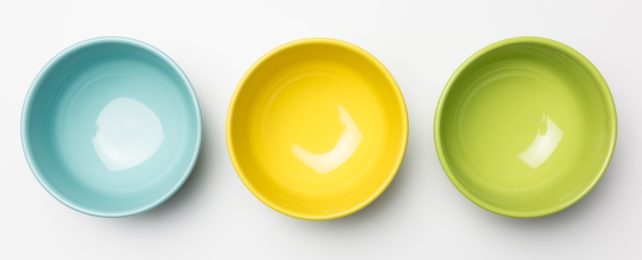If your kids aren't keen on a particular dish, you might want to try changing the look of the crockery it's served in. A new study has revealed how the color of a bowl can impact the taste of the food it holds.
The experiment involved 47 volunteers split into two groups based on their responses to a food-pickiness questionnaire.
Although there is no set way to define a picky eater, the category could arguably include people who have a restricted diet, who have strong dislikes for certain foods, who require food to be prepared in a specific way, who have difficulty accepting new foods, or who show signs of a combination of all these traits.
After ruling out a predisposition towards 'super-tasting' bitter compounds as a reason for differences in eating behavior, food was then served up to the two groups in red, blue, or white bowls.
While the color made no difference in perceived taste for non-picky eaters, the picky eaters did report changes in their taste sensations based on the color of the bowl being used.
"This knowledge could be useful for those trying to expand the repertoire of foods," says psychologist Lorenzo Stafford, from the University of Portsmouth in the UK.
"For example, if you wanted to encourage a picky eater to try more vegetables well known to be viewed as bitter, you could attempt to serve them on a plate or bowl that is known to increase sweetness."
Samples of salt and vinegar-flavored potato chips were given to all of the participants to eat from the differently colored bowls, with the volunteers then asked to rank them based on their desirability, saltiness, and flavor intensity.
While the bowl color didn't seem to have any influence on flavor intensity, there were differences in the other two categories – but only for the picky eaters. Snacks in red and blue bowls were perceived as saltier compared to white bowls, while snacks in red bowls were perceived as less desirable compared with the other bowls.
In line with earlier studies, the researchers suggest that the packaging that the participants are more generally familiar with may have influenced their taste buds; salty snacks are often sold in blue packaging in the UK.
According to Stafford, learning more about how to nudge the behavior of people who struggle to eat a wide range of foods could significantly improve the quality of life for both the individuals themselves, and others around them.
"Having restricted diets can lead to nutritional deficiencies as well as health problems like heart disease, poor bone health and dental issues," says Stafford.
"There is also a social cost because normally enjoyable moments between family members can easily turn into stressful, anxious, and conflict-causing situations when picky eaters feel ashamed or pressured to eat food."
Picky eaters of any age can restrict themselves to as little as 20 food items, past research has shown. With a wide-ranging diet so important to overall health, that can have negative consequences.
At first it may seem strange that a bowl color could influence the taste of food, but previous research has shown how lighting and music can affect eating behaviors. All of our senses are connected after all, including taste.
This new research could help in treating food neophobia, the reluctance to try new foods, the team behind the study says – but further studies will be required looking into a broader range of colors and a broader range of more nutritious foods.
"Through further research we could determine ways to help positively affect a person's diet, and as a result their mental and physical health," says Stafford.
The research has been published in Food Quality and Preference.
